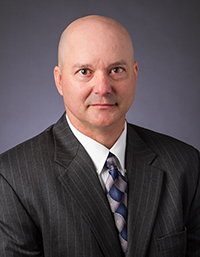3 Ways COVID-19 Accelerates E-Commerce and Creates New Environmental Exposures

Recently, our very own Barry Geisler was featured in a Risk & Insurance article that discussed three ways the pandemic has accelerated e-commerce and how environmental insurance can help protect businesses from redevelopment exposures as the world transitions to the normality of online transactions.
Long-term social distancing may permanently change the way we shop, and that in turn may have consequences for the environment. Insurers can help facilitate growth while minimizing risk. Though its long-term effects remain unclear, there’s little doubt that the COVID-19 pandemic will change the world as we know it. Among its many potential impacts is the possibility that it will permanently alter the way we work and shop.
The “Amazon effect” is already in full force. Many brick-and-mortar stores have buckled under the pressure of e-commerce. Consumers have grown accustomed to the ease and convenience of online shopping and two-day delivery. Those trends were recently reinforced by stay-at-home orders, which leave shoppers little choice but to buy their necessary items online.
“I get my groceries delivered now. I never used to do that, but it’s the norm now,” said Barry Geisler, Divisional Senior Vice President & Chief Underwriting Officer, Great American Environmental. “Being confined to home is forcing people to find new ways to get the items that they need. And once they get used to that process and find it helpful, maybe even easier, they may continue to use those delivery services even after the lifting of social distancing restrictions.”
This shift ultimately will leave more spaces vacant and create opportunities to redevelop those locations into much-needed warehouses, distribution facilities, data centers and renewable energy sources to power it all. And that comes with environmental risk.
Download the full Risk & Insurance article to learn more about the three ways an accelerated “Amazon effect” will create new environmental exposures, and how the right insurer can help mitigate the risk.

Operational exposures emerge with redevelopment of retail spaces.
Speed is integral to the e-commerce revolution. To make good on promises of fast delivery, Amazon and other big retailers with online stores need large networks of distribution centers, close to where its customers live. “To meet this need, there will be lots of opportunities to take previously contaminated sites, clean them and repurpose them,” Geisler said.

Brownfields and landfills hold potential as renewable energy sites, but historical contamination poses a threat.
More data means an increased need for data centers, “which is going to increase the need for energy,” Geisler said. Contaminated sites like brownfields and landfills make attractive locations for solar farms because they may not always be safely reused for other purposes. Converting these sites into renewable energy sources can help to meet climbing power needs without taking up other economically viable space or further damaging the surrounding environment.

Increased transportation of goods means greater likelihood of pollution events.
More warehouses, distribution centers and an increase in home deliveries ultimately mean more trucks on the road. “All of these goods need to be moved from manufacturing locations to logistics centers, and then subsequently to warehouses and/or end users. That increases the likelihood of a pollution event,” Geisler said.
How Environmental Insurers Make the E-Commerce Revolution Safer
Environmental liability coverage offers critical protection for developers, landlords, facility operators and motor carriers who are navigating the risk associated with the ever-changing e-commerce revolution.
One way insurers help to mitigate the risk is by educating buyers and lenders about the potential exposures and liabilities associated with buying, developing and operating commercial real estate.
“We typically get involved in redevelopments to facilitate a sale from a current owner to a prospective buyer. We want to know what due diligence has been done. Have they sampled the soil and groundwater at the location? Have they performed a Phase 1 Environmental Site Assessment, which basically is a history of the operations conducted at the location?” Geisler said. “We want to get a full picture of how the site has been used so that we can accurately determine what the environmental exposures will be.”
The second part of the transaction puzzle is dividing environmental liabilities.
“We take an active look at the transaction documents to see how those liabilities are apportioned to structure a policy that best suits our prospective insured,” Geisler said.
Great American Environmental also covers the financial institutions that facilitate such transactions, who themselves may have liability for pollution events at the site by virtue of having loaned the money for the transaction and taking a security interest in the property as collateral.
The members of the management team at Great American’s Environmental Division have, on average more than 25 years of experience and the division’s senior underwriters have an average 15 years’ experience in the field. Additionally, many on the team have technical degrees and environmental consulting experience. Committed to service excellence, the underwriting teams work with their brokers and agents to uncover the hidden risks in their clients’ operations and develop a custom program to protect them. They work collaboratively with technical consultants and claims professionals to create comprehensive and cohesive solutions to complex environmental risks.
“We have a dedicated set of environmental engineers who we rely on to fully evaluate the environmental exposures, which means we can be more precise in our coverage,” Geisler said. “We don’t take a cookie cutter approach. We pride ourselves on being able to draft individual endorsements to our policy forms that fit the specific set of circumstances of a particular transaction.”
Want to learn more?
We encourage you to continue learning about the importance of environmental coverage and how Great American can best assist your clients in avoiding costly risk associated with the evolving e-commerce revolution.


Barry Geisler, Divisional Senior Vice President
Great American Environmental Division
Barry is a Divisional Senior Vice President and Chief Underwriting Officer for the Great American Environmental Division, leading our Executive Underwriting team. He has been with the Environmental Division for the past ten years. Barry’s prior experience includes serving as contracts counsel with the environmental insurance space as well as working on complex commercial and defense litigation. He is based out of our Exton, PA office.